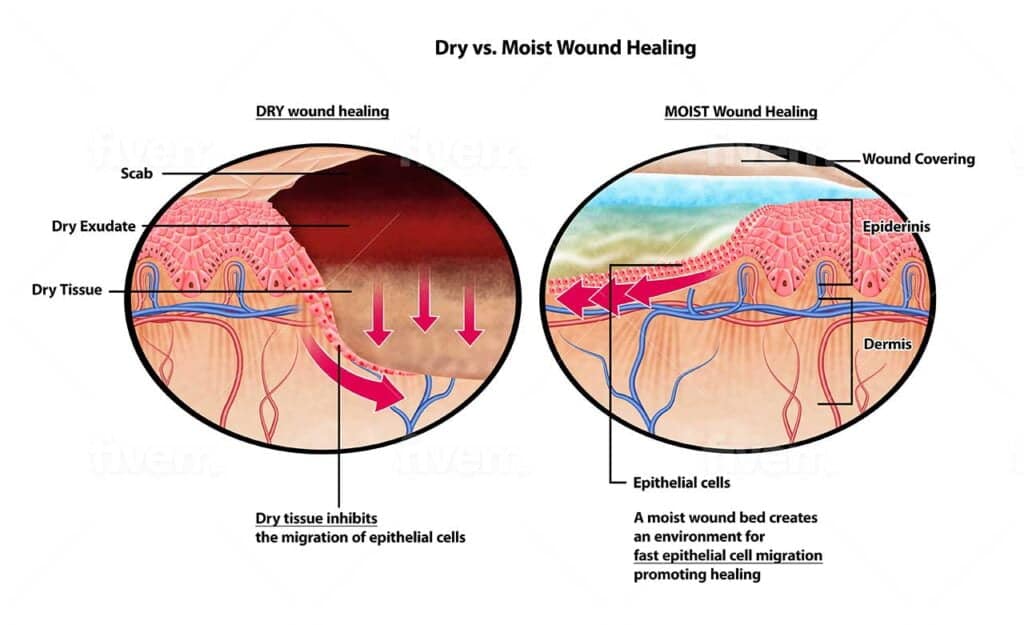
Wound care is an essential aspect of medical treatment, and advancements in this field have significantly improved patient outcomes. One such innovation is oxygen wound therapy, which has gained recognition for its effectiveness in accelerating healing and promoting tissue regeneration. This article explores the concept of oxygen wound therapy, its benefits, and its role in providing optimal wound care solutions, particularly for chronic ulcers.
Understanding Oxygen Wound Therapy
Oxygen wound therapy, also known as topical oxygen therapy or hyperbaric oxygen therapy (HBOT), involves the application of pure oxygen to a wound site to enhance healing. The treatment can be delivered through various methods, including using a hyperbaric chamber, oxygen-emitting dressings, or oxygen-permeable materials. The primary objective is to increase the oxygen concentration in the wound, facilitating improved cellular activity and tissue repair.
The Role of Oxygen in Wound Healing and fighting of infection
Oxygen plays a crucial role in the wound-healing process. It is necessary for several cellular activities, including collagen synthesis, angiogenesis (formation of new blood vessels), and fighting off infection. In a chronic wound, the oxygen supply to the affected area is often impaired, hindering the healing process and making the wound more susceptible to complications. Oxygen wound care therapy addresses this issue by providing a localized oxygen boost, restoring the necessary conditions for efficient healing.
Benefits of Oxygen Wound Therapy
Enhanced Healing: The increased oxygen levels delivered through oxygen wound therapy stimulate cellular metabolism and promote tissue regeneration, leading to faster wound closure. This mainly benefits chronic wounds that have failed to respond to traditional wound care methods.
Improved Microcirculation: Oxygen therapy aids in the formation of new blood vessels, a process crucial for proper wound healing. By enhancing microcirculation, more oxygen, and nutrients reach the wound site, promoting tissue repair and preventing the formation of non-healing ulcers.
Antimicrobial Effect: wound care ulcer has antimicrobial properties and can help combat wound infections. Some bacteria thrive in low-oxygen environments, and by increasing oxygen levels, oxygen wound therapy creates an inhospitable environment for these microorganisms.
Wound care ulcer has antimicrobial properties and can help combat wound infections.
Reduction in Edema: Edema, or swelling, often accompanies chronic wounds and can impede healing. Oxygen wound therapy has been found to reduce edema by improving tissue oxygenation and facilitating lymphatic drainage.
Pain Relief: Chronic wounds can be painful and significantly impact a patient's quality of life. Oxygen wound therapy has been reported to alleviate pain by reducing inflammation, improving blood flow, and promoting healing, ultimately enhancing patient comfort.
Oxygen Wound Therapy for Ulcers
Chronic ulcers, such as diabetic foot, venous leg, and pressure ulcers, present a significant challenge in wound care. These wounds often have impaired blood flow and low oxygen levels, making them difficult to heal using traditional approaches alone. Oxygen wound therapy has shown remarkable efficacy in treating such ulcers.
For example, in the case of diabetic foot ulcers, wound care solutions can help reduce the risk of amputation by improving healing rates. Studies have demonstrated that oxygen therapy promotes wound closure and enhances the formation of granulation tissue, which is essential for successful healing.
Similarly, venous leg ulcers, notorious for their slow healing and high recurrence rates, can benefit from oxygen wound therapy. By addressing the underlying oxygen deficiency, this treatment can expedite healing, reduce wound size, and minimize the likelihood of recurrence.
Conclusion
Oxygen wound therapy represents a revolutionary approach to wound care solutions, particularly for chronic ulcers. This therapy significantly enhances the healing process, promotes tissue regeneration, and combats infection by providing a localized oxygen supply. The benefits of oxygen wound therapy extend beyond wound closure, offering pain relief, reducing edema, and improving microcirculation. With its potential to transform the management of chronic wounds, oxygen wound therapy holds great promise for improving patient outcomes and quality of life. As further research and advancements continue, this innovative treatment modality will undoubtedly play a vital role in the future of wound care.
For more information about wound care solutions, click Advanced Oxygen Therapy Inc. for the best oxygen therapy.




